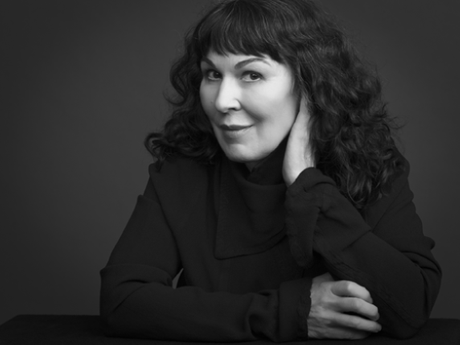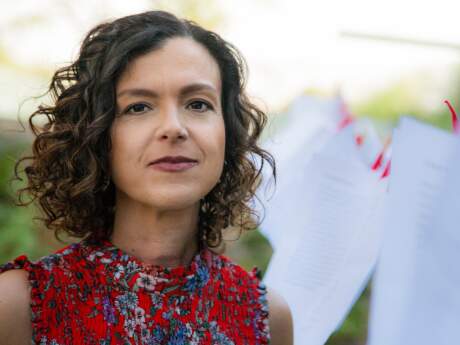In Their Own Words
Mary Jo Bang's “Compulsion in Theory and Practice: Principles and Controversies”

Compulsion in Theory and Practice:
Principles and Controversies
Psycho-sexual memories coalesce into a complex fear—
I want, I am opposed to—every contrary desire becoming
equally evident.
Transference might be a masochistic shame-kiss signifier,
or some sort of extreme narcissistic need.
A normal form of defense could lead to a state of rage.
Affective states could be performed on stage.
Chaos could be suggested by something as humble, and
as theatrical, as breaking glass.
A human—face painted, dressed as a clock—could race
time back to a start line
and then be made to stand, face against the wall, and
think and think and think: I am, I never will not be.
From The Last Two Seconds (Graywolf Press, 2015). Reprinted with the permission of the author.
On "Compulsion in Theory and Practice: Principles and Controversies"
At this moment when neuroscience is able to map so much of the brain's activity, what's interesting is that in spite of all that mapping, and countless theories spanning centuries, the construct of the self, both one's self-perception and how one behaves in any given situation, seems to defy understanding. Perhaps because it's not possible to tease apart all of the elements that contribute to it: genetics, education, history, nutrition, viruses, bacteria, the air one breathes, the enormity of culture—all of which morphs continuously over a lifetime.
I wrote "Compulsion in Theory and Practice: Principles and Controversies" after watching the 2011 film A Dangerous Method [adapted by Christopher Hampton from his 2001 stage play The Talking Cure, which was based on a 1993 non-fiction book by John Kerr, A Most Dangerous Method: The Story of Jung, Freud, and Sabina Spielrein.] I was already aware of Spielrein from Elisabeth Márton's 2002 documentary My Name is Sabina Spielrein, which was based on a cache of Spielrein's papers that was discovered in 1977 in the basement of the former Institute of Psychology in Geneva. Márton's is a much better film, the Hollywood one takes as fact a sexual relationship between Spielrein and Jung, and melodramatizes that situation and Spielrein's condition.
The facts are that in August 1904, when Spielrein was 18, and Jung was 29 and married, she became his first patient at the Burghölzli Clinic in Zurich. He treated her for what was then known as hysteria. She went on to become an object of Jung's lust (whether it was acted upon isn't verifiable); Jung drew Freud into her case and Freud's awareness of Jung's feelings served as a prompt for Freud's theory of transference and countertransference. Spielrein also serves as a case history of sexual compulsion. She later graduated from medical school and became one of the first female psychoanalysts. She wrote and published and had a professional relationship with Freud, whose ideas she influenced. In a footnote in Beyond the Pleasure Principle he notes that her work anticipates his. In August 1942, Spielrein and her two daughters were executed in Russia, along with over 26,000 others, by a Nazi death squad.
It seems to me that compulsion is just one step along the continuum that includes every urge we ever have. Watching the Hollywood film sent me back to articles about and by Spielrein and from that came this poem, which attempts to enact in language the idea of the experiential nature of compulsion, its immobilizing and mesmerizing steel-jaw trap.


